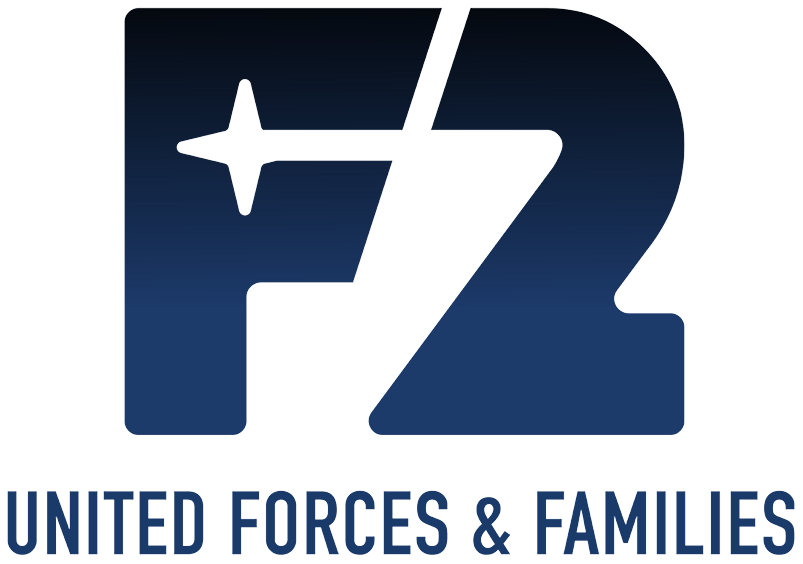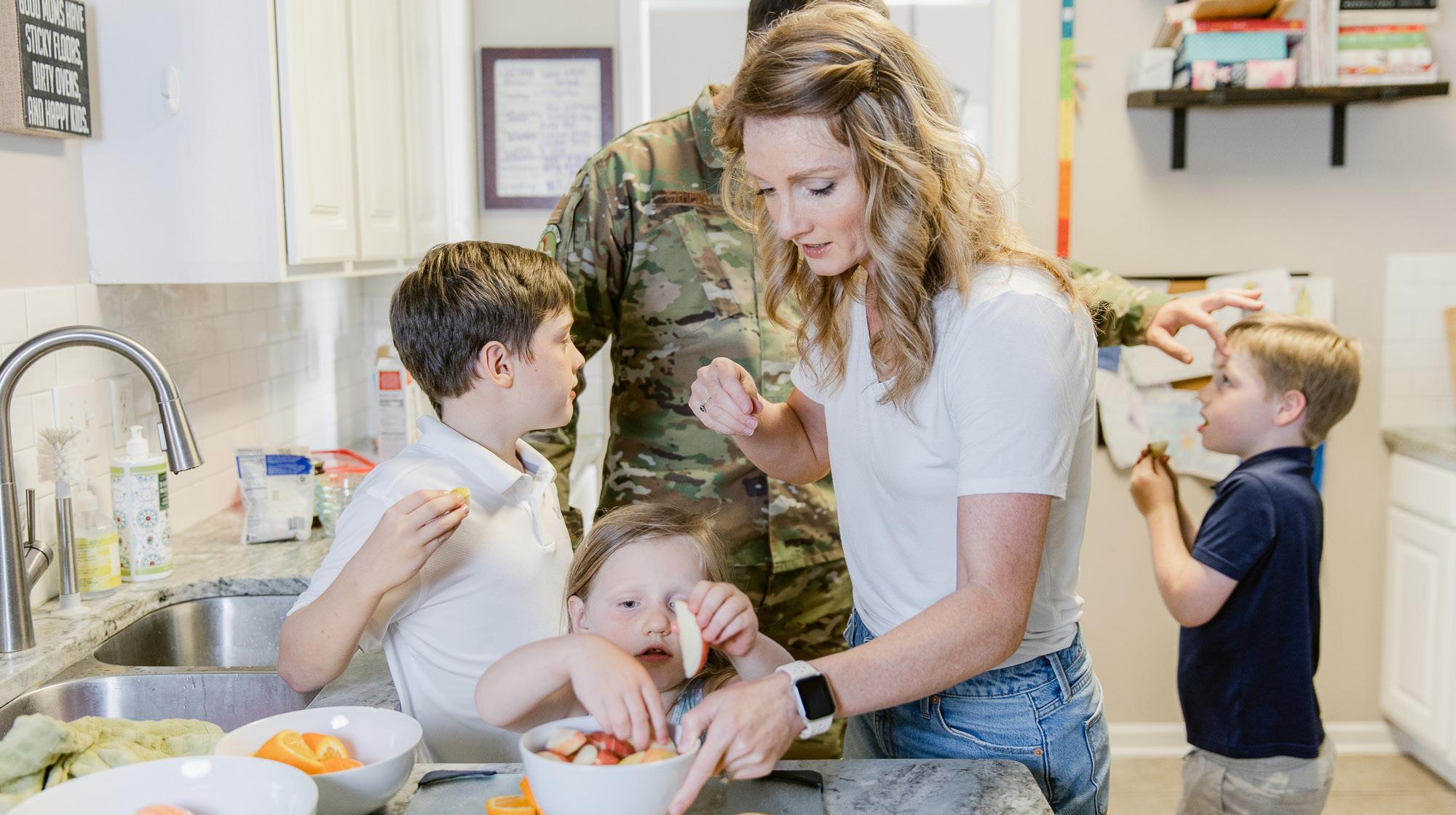Our Shared Mission: Elevating Family Readiness for a Stronger Force
February 20, 2025 | By Heather Campbell
As a former military kid turned military spouse, I often joke that I’m a lifelong groupie who now leads a band of groupies. While I love many of the unique aspects of military life, like the close community, income stability and benefits, and the adventure our family experiences together, I was shocked at how quickly our quality of life could change.
UNDERSTANDING THE CHALLENGES
In our first three years of marriage, we experienced moving to a small overseas base, the loss of my income, the death of a parent, the birth of two babies, and our first deployment. Suddenly, in our new location, I couldn’t find work in my area of expertise that would cover the cost of childcare for two babies and we didn’t have family nearby to be a backup babysitter.
We missed the eligibility for nutrition assistance by less than $100/month, despite living way below that eligibility line once student debt payments were made.
We struggled with food insecurity (defined by the USDA as a lack of access to enough food for an active, healthy lifestyle), even though we were outliers from the data compared with the 1 in 4 Active-duty families also struggling, according to the DoD. For us, the burden was more than simply the struggle to make ends meet. The overlap of spouse unemployment, lack of childcare, lack of adequate healthcare, the growth of our family, remote location, austere environment, and the cost of our overseas relocation took a toll on our marriage, our family, and my mental health in a place that is at the top of the list for mental health and suicide concerns. While we couldn’t believe how quickly life changed for us, as we found resources, support, and stability our concern grew on behalf of our peers.
“Why did this happen to us?”
“Why weren’t we prepared for this issue?”
“Where are the mentors and leaders to help equip the next generation of servicemen and women?”
“What did we do wrong?”
“How are other families surviving?”
“What other issues are causing similar domino effects for military and veteran families?”
COMPOUNDING CONCERNS
Between 2019 and 2023, inflation, housing, healthcare, cost of food, parental leave, mental health, childcare, and our education system have all reached a breaking point nationwide, causing even our civilian neighbors to engage in conversations for reform and solutions.
What many people may not realize is these concerns were already ongoing in the military community as far back as the early 1980s, and often at much higher incidence rates: inadequate childcare, health care deserts, lack of access to mental health support, long wait times for specialty care, limited support for special needs families, military spouse unemployment, food insecurity, unsafe or unaffordable housing, limited communication while apart for missions, and repeatedly severed support networks.
While these issues have escalated, military pay and benefits have struggled to keep up with inflation and the needs of the Total Force, training tempos have not decreased with our removal of troops from Afghanistan, and mental health access is more limited than ever.
With all of these compounding issues at home, we are living in a chronic state of stress, which then limits our ability to remain resilient when acute stressors arise. This trend impacts our mental well-being, relationships, and financial stability, therefore creating a trickle-down effect on our service members’ ability to prepare for their daily mission.
But there is hope.
It’s not all doom and gloom or problems, because the military community has an often overlooked superpower: our military families. We are the most educated demographic in the modern workforce, while also being chronically unemployed and underemployed.
We are experts at market research, acquisitions, logistics, budgets, problem-solving, community building, and crisis response. So, where do we go from here? How do we, in the military community, tackle multiple areas of concern to improve military quality of life so our Airmen and Guardians can focus on mission readiness for their work and their families? How do we move forward together to help create stability for military members and their families so they can focus on strengthening our national security?
That’s the answer: We Go Together.
GOING TOGETHER
The first step is to engage by learning about the local installation mission and the needs of the families who serve there. To find this information, what better way to learn than to go to the families themselves?
Often, when community members want to learn how to help military families, they ask commanders or official representatives of an installation. However, the best way to discover what problems the families need support with is to ask the families directly.
We must have all stakeholders, including military families, present in these conversations to find sustainable solutions that create impact. Any person, organization, or entity claiming to serve, support, or show gratitude for the military in their community should have military family members as stakeholders and official members of their decision-making process.
Truthfully, the gold standard of inclusion and support would be to stop asking military family members, primarily military spouses, to act as the free problemsolving labor force of the military community. Instead, hiring military family members- not just veterans- in paid roles to advise in this capacity would not only help create financial stability and community inclusion for military families, but it would also give community partners access to the wealth of knowledge, experience, and expertise that is shared among the military spouse community.
Next, to continue finding solutions together, we must encourage collaboration. On both the local and national scale, we can find organizations engaged in problemsolving many of these concerns using thorough research and intentional collaboration instead of competition. Organizations like F2 and key resource partners truly value the input of military families and spouses and use that input to create impact, spur connection, and help initiate change with our community partners.
Finally, we must take action. Whether we decide to give our time, our talents, or our network, the military community must become active members of the solutions we need, willing to roll up our sleeves and do some of the hard work that leads to reward, instead of just waiting for rewards to come to us.
When we work together across the Total Force, we can ensure that every service member and family knows they are valued and supported as essential players in the shared interest of national security.
This article was written by Heather Campbell, a nationally recognized subject matter expert in food insecurity and quality of life within the military community. You can read Heather’s full bio and the complete edition of United Forces & Families ENGAGE: Elevating Family Readiness here.

About F2
AFA’s United Forces & Families (F2) program provides direct support to Airmen, Guardians, their spouses, and their children through financial grants, community events, networking opportunities, and more.
